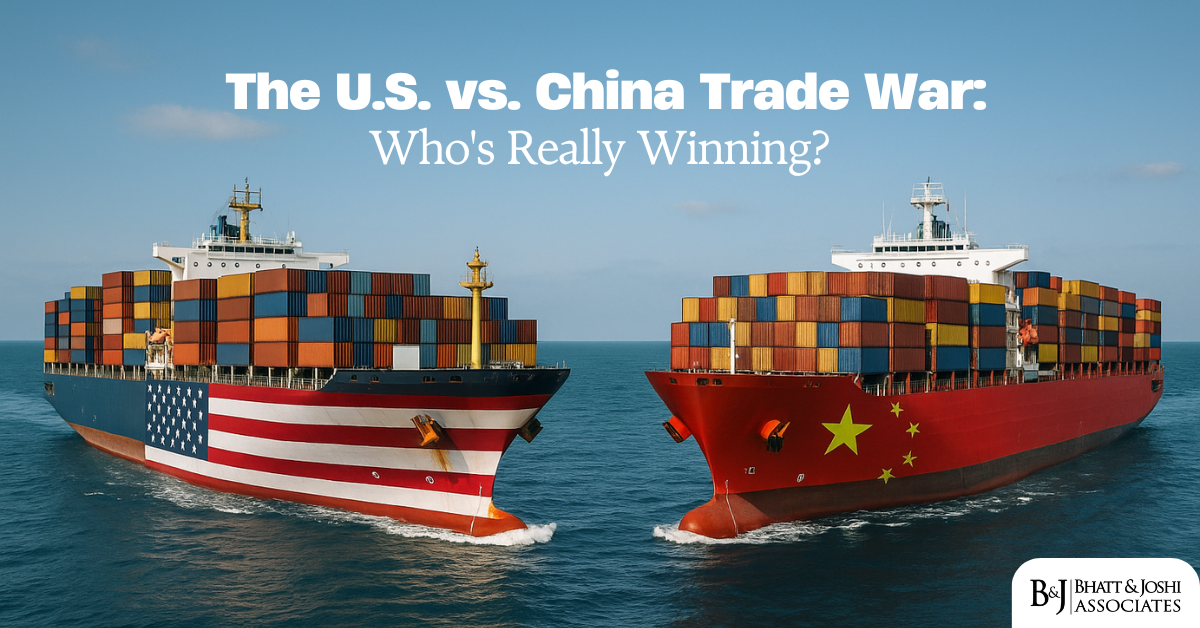Introduction
The U.S. vs. China trade war represents the most significant economic conflict since the 1930s, reshaping global trade patterns and challenging fundamental assumptions about economic globalization. What began as a dispute over trade imbalances has evolved into a broader strategic competition, encompassing technology, national security, and competing visions of the global economic order. Understanding who is “winning” this conflict requires looking beyond simple metrics of trade balances to examine deeper structural changes in both economies and their global influence.
The stakes in this conflict extend far beyond bilateral trade relations. They encompass fundamental questions about technological leadership, economic security, and the future of the international trading system. As both nations deploy increasingly sophisticated economic weapons, the impact reverberates through global supply chains, affecting countries and companies worldwide.
Historical Context and Origins of the U.S.-China Trade War
The roots of the current U.S. vs. China trade war lie in decades of economic interaction between the United States and China. Following China’s economic opening under Deng Xiaoping in 1978, trade between the two nations grew exponentially, particularly after China’s accession to the World Trade Organization in 2001. American companies eagerly embraced China as both a manufacturing base and a potential market, while Chinese firms gained access to American technology and expertise.
However, this relationship was built on assumptions that proved increasingly problematic. American policymakers believed economic engagement would lead to market reforms and political liberalization in China. Instead, China developed a unique hybrid system combining state direction with market mechanisms, pursuing industrial policies that challenged American economic leadership while maintaining significant barriers to foreign competition in key sectors.
The Escalation Under Trump
The Trump administration’s decision to impose tariffs on Chinese goods in 2018 marked a dramatic departure from decades of U.S. trade policy. Beginning with tariffs on solar panels and washing machines, the conflict quickly escalated to encompass hundreds of billions of dollars in bilateral trade. Section 301 tariffs, based on allegations of intellectual property theft and forced technology transfer, became the primary weapon in this economic conflict.
The administration’s approach reflected a fundamental shift in U.S. thinking about China. Rather than viewing economic engagement as a path to reform, policymakers increasingly saw trade with China as a strategic threat. This perspective was codified in the 2017 National Security Strategy, which explicitly identified China as an economic competitor pursuing policies harmful to U.S. interests.
Strategic Objectives and Methods
American objectives in the trade war extended beyond reducing the bilateral trade deficit. Key goals included protecting intellectual property rights, ending forced technology transfer practices, reducing industrial subsidies, and opening Chinese markets to U.S. companies. The methods employed reflected this broader agenda, combining tariffs with investment restrictions, export controls, and diplomatic pressure on allies to limit Chinese access to advanced technology.
The Phase One trade agreement, signed in January 2020, represented an attempt to address some of these issues through specific purchase commitments and reform promises. However, the agreement left many fundamental issues unresolved, illustrating the difficulty of using traditional trade tools to address strategic economic competition.
Economic Impact Analysis of Trade War
The direct economic impact of the trade war has been substantial for both nations. American consumers and businesses have faced higher costs for imported goods, while farmers and manufacturers have lost market share in China. Studies estimate the tariffs cost the average American household several hundred dollars annually through higher prices and reduced economic efficiency.
China has experienced slower economic growth and accelerated the shift of some manufacturing to other countries. However, the impact has been mitigated by government support for affected industries and the ability to redirect exports to other markets. Chinese companies have also accelerated efforts to develop domestic alternatives to U.S. technology, potentially reducing long-term dependence on American suppliers.
China’s Response to the U.S.-China Trade War
China’s response to U.S. pressure has been multifaceted and strategic. Beyond retaliatory tariffs, China has pursued several initiatives to reduce vulnerability to U.S. economic pressure. The “Dual Circulation” strategy emphasizes domestic consumption and technological self-sufficiency, while the Belt and Road Initiative creates alternative trade and investment networks less dependent on the United States.
Chinese policymakers have also accelerated efforts to internationalize the renminbi and develop alternative payment systems, reducing vulnerability to U.S. financial sanctions. Investment in strategic technologies like semiconductors, artificial intelligence, and quantum computing has increased dramatically, supported by substantial government funding and policy support.
Biden Administration Approach
The Biden administration has maintained most Trump-era tariffs while seeking to build international coalitions to address China-related challenges. This approach reflects a broader recognition that unilateral pressure has limited effectiveness and that coordinated action with allies may be more successful in influencing Chinese behavior.
The focus has shifted from tactical trade measures to strategic competition in key technologies and industries. Initiatives like the CHIPS Act and efforts to secure supply chains for critical materials reflect this more comprehensive approach to economic security.
Current State of Affairs
The trade war has accelerated several significant trends in the global economy. Supply chains are being reorganized to reduce dependence on China, particularly in strategic sectors. Both countries are investing heavily in domestic industrial capabilities, marking a shift away from pure market efficiency toward greater emphasis on economic security.
However, the deep economic interdependence between the U.S. and China makes complete decoupling impractical and potentially harmful to both nations. The challenge lies in managing strategic competition while maintaining beneficial economic cooperation in non-sensitive areas.
Future Implications of the U.S.-China Trade War
Looking ahead, several factors will shape the evolution of this economic conflict. Technological competition, particularly in areas like artificial intelligence, quantum computing, and biotechnology, is likely to intensify. The role of third countries, especially U.S. allies in Europe and Asia, will become increasingly important in determining the outcome.
Climate change presents both challenges and opportunities for cooperation, as both nations need to transition to cleaner energy technologies. However, competition for leadership in these new industries could create additional sources of tension.
Conclusion
The question of who is “winning” the U.S. vs. china trade war defies simple answers. While both countries have experienced economic costs, the longer-term impact will likely be measured not in trade statistics but in structural changes to the global economic order. The United States has succeeded in highlighting concerns about Chinese economic practices and building international consensus for reform, but China has demonstrated remarkable resilience and accelerated efforts to reduce dependence on U.S. technology and markets.
The most significant outcome may be the emergence of a more fragmented global economy, with competing technological standards and economic spheres of influence. Success in this new environment will require both nations to adapt their economic strategies while managing the risks of excessive decoupling.
The future relationship between the world’s two largest economies will likely combine elements of competition and cooperation, requiring sophisticated policy approaches that protect national interests while preserving the benefits of economic engagement. The real winners may be countries that successfully navigate this complex new landscape while maintaining technological competitiveness and economic resilience.














